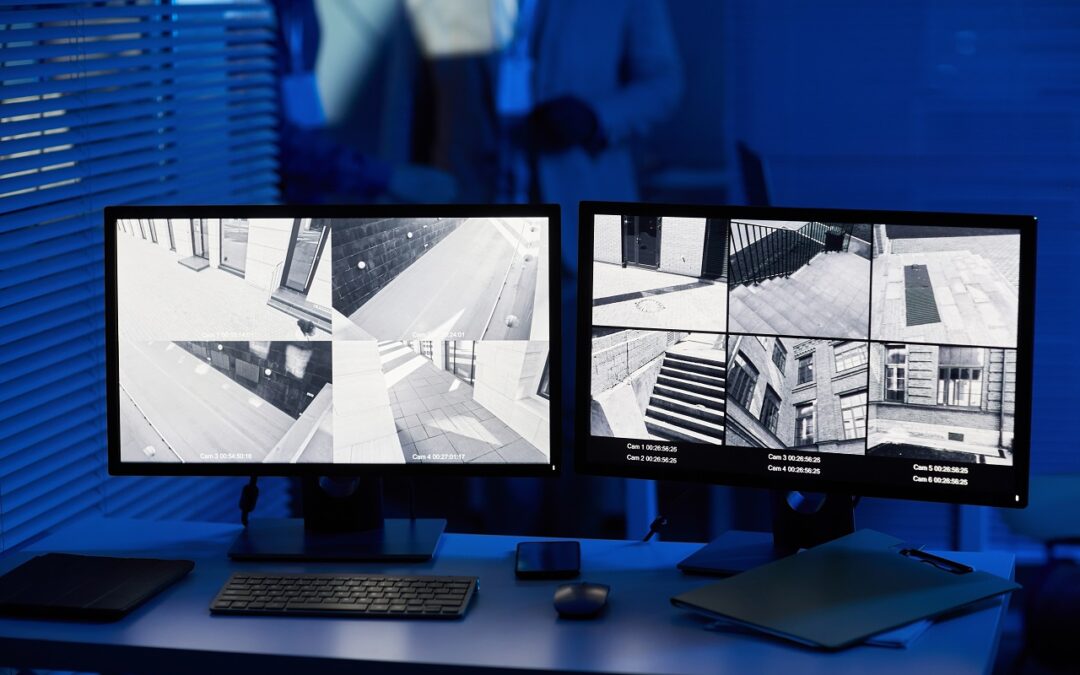In the dynamic and fast-paced world of retail, businesses face numerous security challenges, from shoplifting and theft to employee safety concerns. To keep both customers and employees safe and protect their valuable assets, retail store owners must implement an effective security strategy that addresses these challenges. Remote video monitoring (RVM) has emerged as an innovative and impactful solution, enhancing retail security in various aspects. In this blog post, we will explore the benefits of implementing remote video monitoring solutions in retail stores, how RVM helps in loss prevention and employee protection, and the insights businesses can gain to improve store operations and efficiency.
Remote video monitoring combines cutting-edge surveillance technology with real-time analytics and human intelligence to provide a comprehensive security solution in retail settings. High-resolution cameras are strategically placed throughout the store, capturing live video feeds that are monitored remotely by trained professional security agents. It enables immediate intervention from this remote team in case of any security concerns. Moreover, the RVM system can employ artificial intelligence (AI) and machine learning algorithms to analyze video data and recognize unusual activities, alerting security personnel to potential risks.
Apart from enhancing security, remote video monitoring can also provide valuable insights into various aspects of retail operations, such as customer behavior, store layout efficiency, and employee productivity. These insights can help retailers optimize their store functions, ultimately improving customer satisfaction and boosting sales. This advanced security solution not only helps prevent financial losses due to theft but also contributes to creating a safe shopping environment for both customers and staff.
Components of a Successful Remote Video Monitoring System for Retail Stores
Before discussing the various benefits and best practices for implementing remote video monitoring in retail settings, let’s first identify the key components of an RVM system:
- High-Resolution Surveillance Cameras: For optimal performance, retail stores should install high-resolution cameras at strategic locations to capture clear video feeds and provide comprehensive coverage.
- Video Analytics Software: Advanced video analytics software, powered by AI and machine learning, plays a crucial role in detecting unusual activities and alerting security personnel to potential risks.
- Remote Monitoring Center: A team of professional security agents monitors the live video feeds from a remote location, enabling them to identify and address security threats in real time.
- Communication Systems: RVM systems often include communication devices, such as speakers, microphones, and alarms, that allow security personnel to engage with individuals on site or contact relevant authorities when needed.
The Benefits of Remote Video Monitoring for Retail Security
The implementation of remote video monitoring systems in retail environments can offer tremendous benefits in terms of security, loss prevention, and operational efficiency:
- Loss Prevention: By providing continuous surveillance and real-time intervention capabilities, RVM systems act as significant deterrents for potential shoplifters, reducing shrinkage and protecting valuable inventory.
- Employee Protection: Remote video monitoring systems contribute to a safer work environment for staff by addressing potential threats, monitoring employee activities, and ensuring that safety procedures are followed.
- Operational Insight: The analysis of video feeds can provide valuable insights into store operations, such as customer behavior patterns, store layout efficiency, and employee productivity, helping retailers make informed decisions and improve overall performance.
- Cost-Effectiveness: Remote video monitoring often proves more cost-effective than traditional security measures, such as hiring on-site security guards, while offering enhanced capabilities and coverage.
Best Practices for Implementing Remote Video Monitoring in Retail Stores
To maximize the potential benefits of remote video monitoring in retail settings, consider following these best practices for successful implementation:
- Conduct a Thorough Assessment: Prior to implementing an RVM system, retailers should evaluate their stores to identify potential security risks and determine the most effective locations for surveillance camera placement.
- Invest in High-Quality Equipment: For optimal performance and accurate threat detection, it’s essential to invest in high-quality surveillance cameras and video analytics software.
- Integrate with Existing Security Measures: Remote video monitoring should be incorporated as part of a comprehensive security strategy, integrated with other measures such as access control systems, intrusion alarms, and physical security tactics.
- Regular Maintenance and Evaluation: Periodic maintenance checks and performance evaluations ensure that your RVM system continues to function effectively, keeping your store secure and well-protected.
The Future of Retail Security and Remote Video Monitoring
As remote video monitoring continues to evolve and gain traction in the retail industry, several trends may emerge to further advance retail security solutions:
- Advanced Analytics and AI: The ongoing development of AI and machine learning technologies will likely contribute to even more accurate and sophisticated video analytics capabilities, enhancing security and providing greater operational insights.
- IoT Integration: As the Internet of Things (IoT) becomes increasingly prevalent, remote video monitoring systems may benefit from seamless integration with other store technologies, creating a more comprehensive and connected security environment.
- Mobile Integration: The incorporation of mobile technology in RVM systems could enable retailers to receive real-time security updates and access live video feeds from their devices, providing greater flexibility and control.
- Enhanced Customer Satisfaction: As retailers continue to adopt remote video monitoring solutions, the improved security and valuable insights derived from these systems will contribute to an elevated shopping experience for customers, fostering brand loyalty and increased sales.
Empowering Retailers with Remote Video Monitoring Solutions
Implementing remote video monitoring in retail settings offers significant benefits for businesses, enhancing security, loss prevention, and operational efficiency. As technology continues to advance, remote video monitoring solutions will likely become an integral part of retail security strategies, ensuring a safe and welcoming environment for customers and staff alike. Integrating RVM systems with other security measures and embracing best practices for implementation will enable retailers to maximize the benefits of this advanced technology and revolutionize their approach to store security.
If you’re interested in elevating your retail security strategy with remote video monitoring solutions, get in touch with Blue Eye today.

